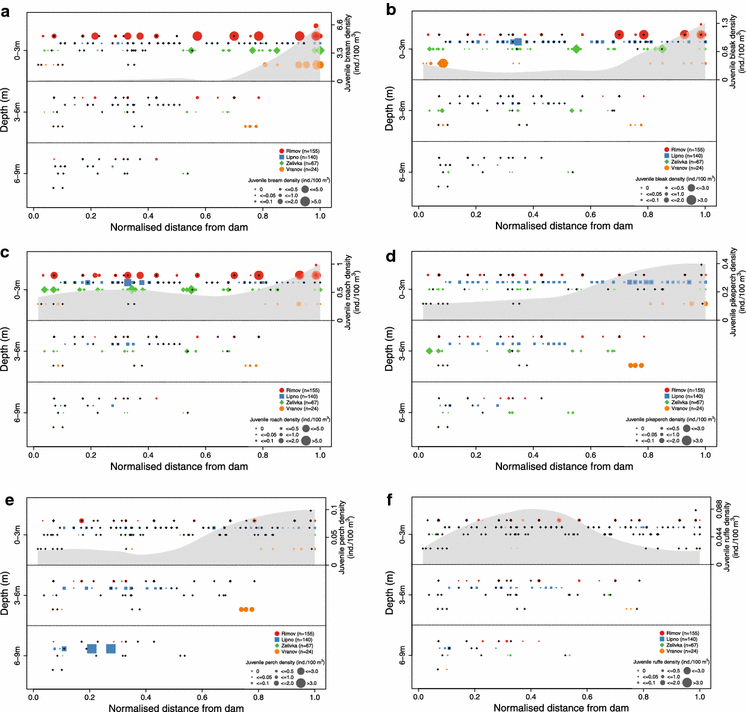Data from nine reservoirs in the Czech Republic were used to investigate density and size distribution patterns for dominant fish species of the juvenile pelagic community at night. Clear trends of increasing density along the longitudinal gradient for bream, roach, bleak, and pikeperch were observed in long (>5 km) reservoirs but were absent in short reservoirs. Increasing body size towards the tributary was observed for bream, perch, pikeperch, and ruffe. Cyprinids showed a clear affinity to the surface layer (0–3 m) of long reservoirs, while pikeperch and ruffe juveniles occurred homogeneously at depths down to six meters. Perch juveniles had the highest densities especially in 3–6 m water layer. Size did not change with sampling depth for any species in the reservoirs studied. Our data showed gentle spatial segregation of different juvenile fish species. Although the tributary area is usually the most productive, it is not able to support all juveniles leading to inter- and intra-specific competition and the relegation of juveniles of some species to less productive habitat. This trend was more apparent in long reservoirs with strong trophic gradients. The gradient of nutrients seems to be an important factor driving fish distribution along longitudinal profile of reservoirs.
Keywords: abramis; alburnus; gymnocephalus; horizontal distribution; juvenile density; perca; rutilus; stizostedion; trawling; tributary area; vertical distribution

